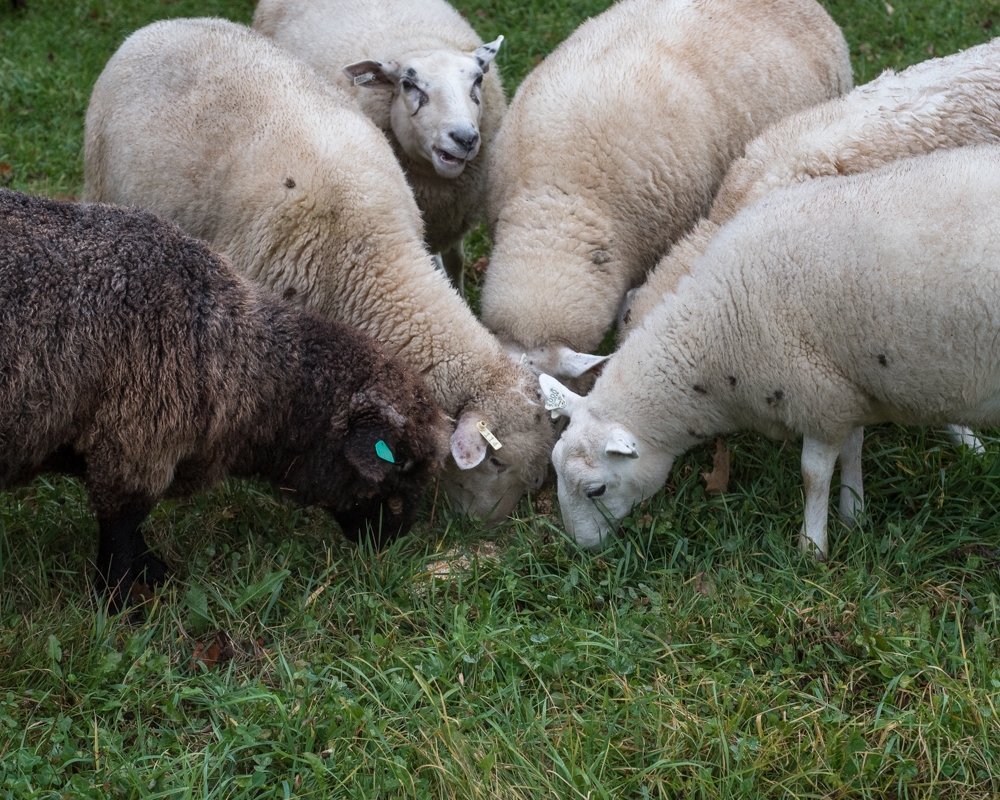The lambs are starting to look more sheep-like and less lamb-like.
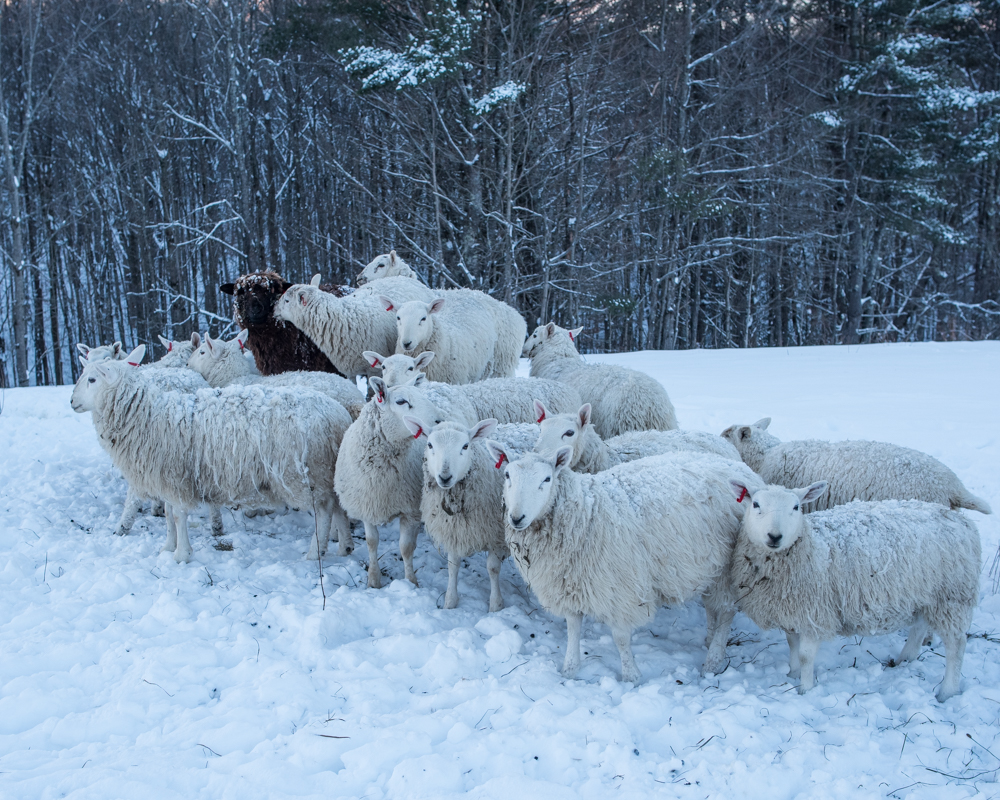
But they still take any opportunity to climb above their peers.
The lambs are starting to look more sheep-like and less lamb-like.

But they still take any opportunity to climb above their peers.
Yesterday’s bright light was balanced by gray and rain today. (The ladies wanted to make sure that I understood it was time to move to new grass.)
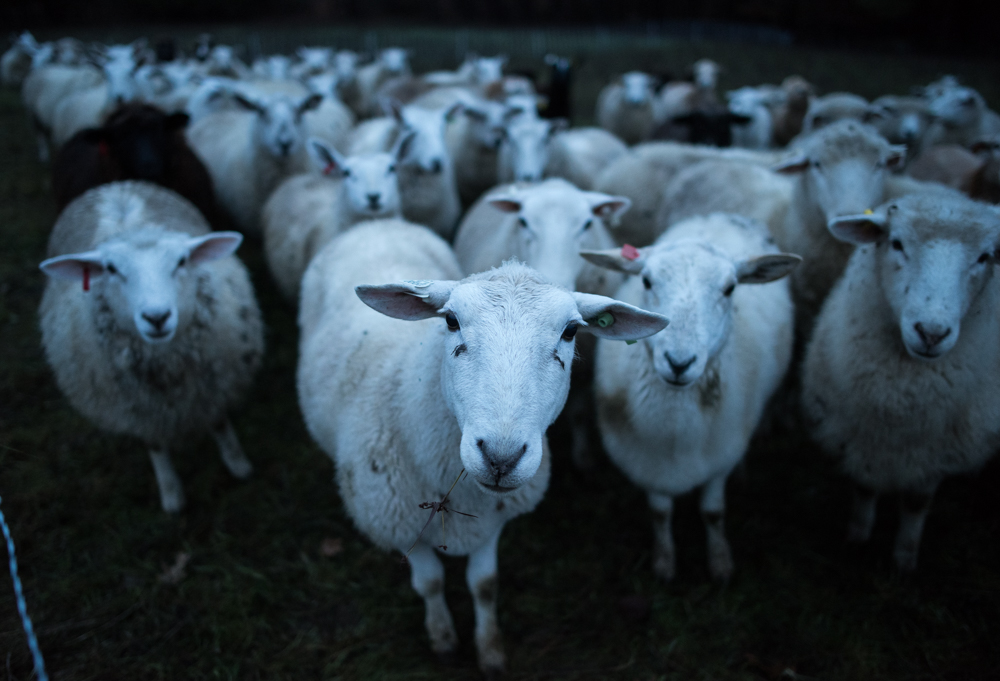
I was grateful for weather that motivated me to work at my desk most of the day.
My water problem got temporarily solved by yesterday’s snow.
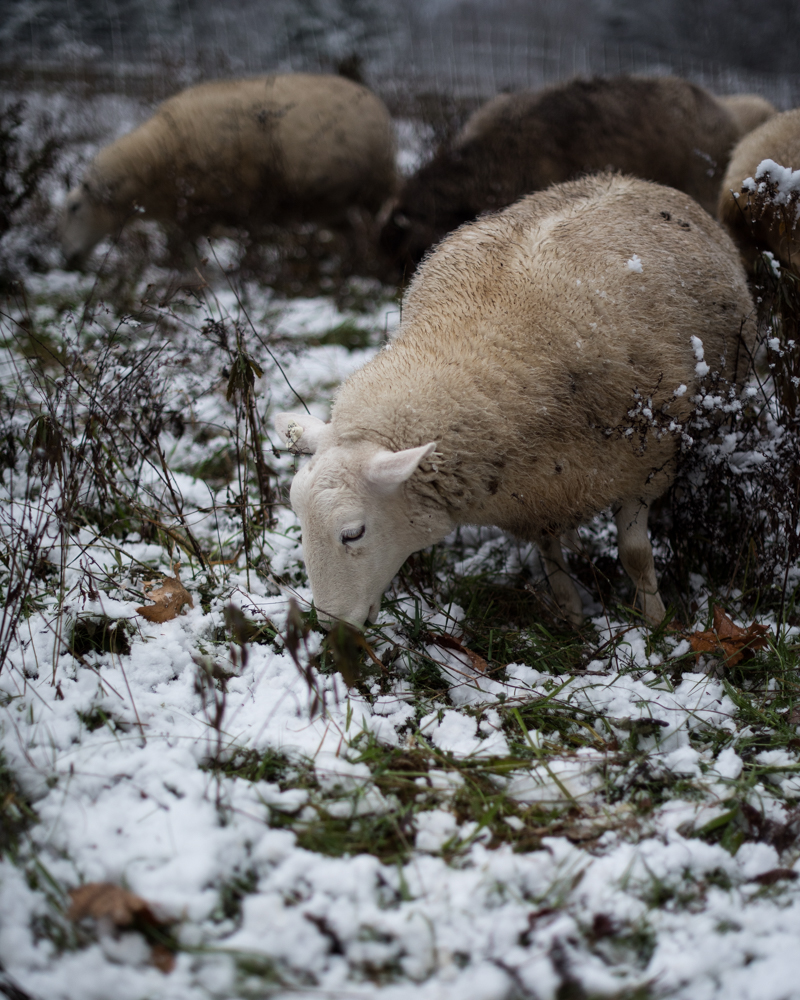
The sheep will happily eat snow to meet their hydration needs, so I don’t need to haul water to refill their drinking station. The flip side — there’s always a flip side, eh? — is that the grass disappears and I no longer have much idea how the grazing is going. It’s harder to tell how much the flock has eaten, so I’m not sure when to move them, and I lose my ability to gauge the size of their next grazing rotation. I’ve gotten to the point where I can usually look at a section of pasture and know how big I need to make the electronet enclosure so the sheep will have half a day of forage. But now with snow-induced amnesia, I’m trying in vain to remember what the grass looked like (despite staring at it for hours every day…), and my estimating abilities diminish considerably. All I can do is make an educated guess and come back half a day later to see if the sheep look full.
We got a few inconsequential snowflakes this morning, but the first ones always feel like a shot across the bow.
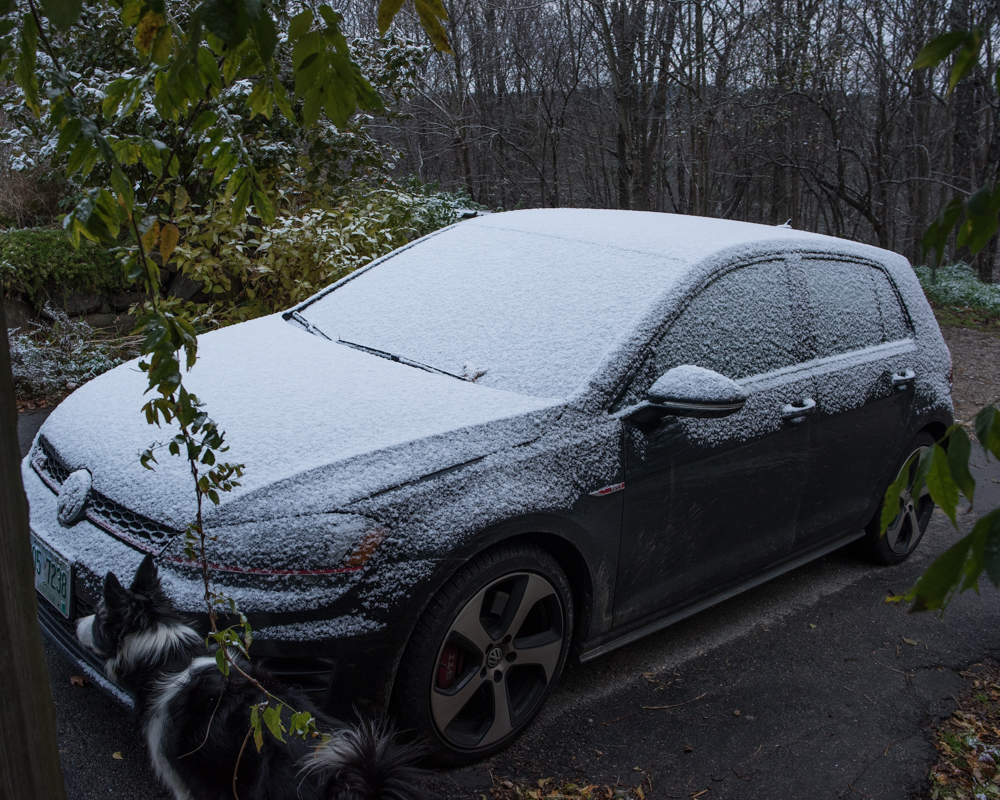
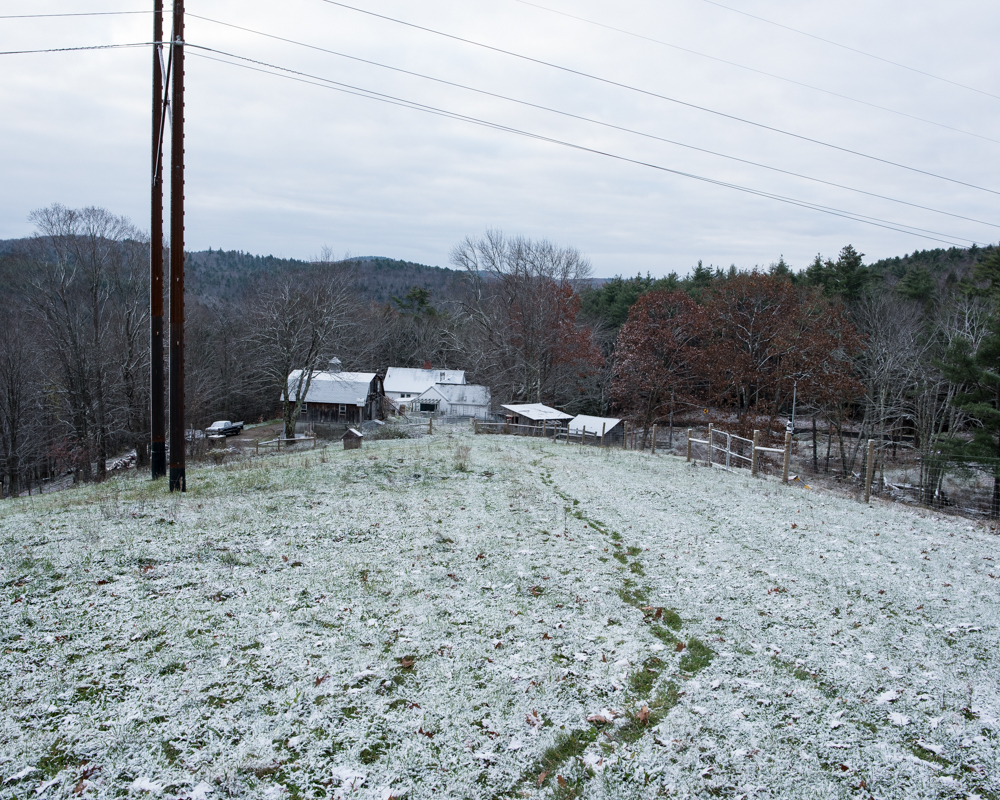
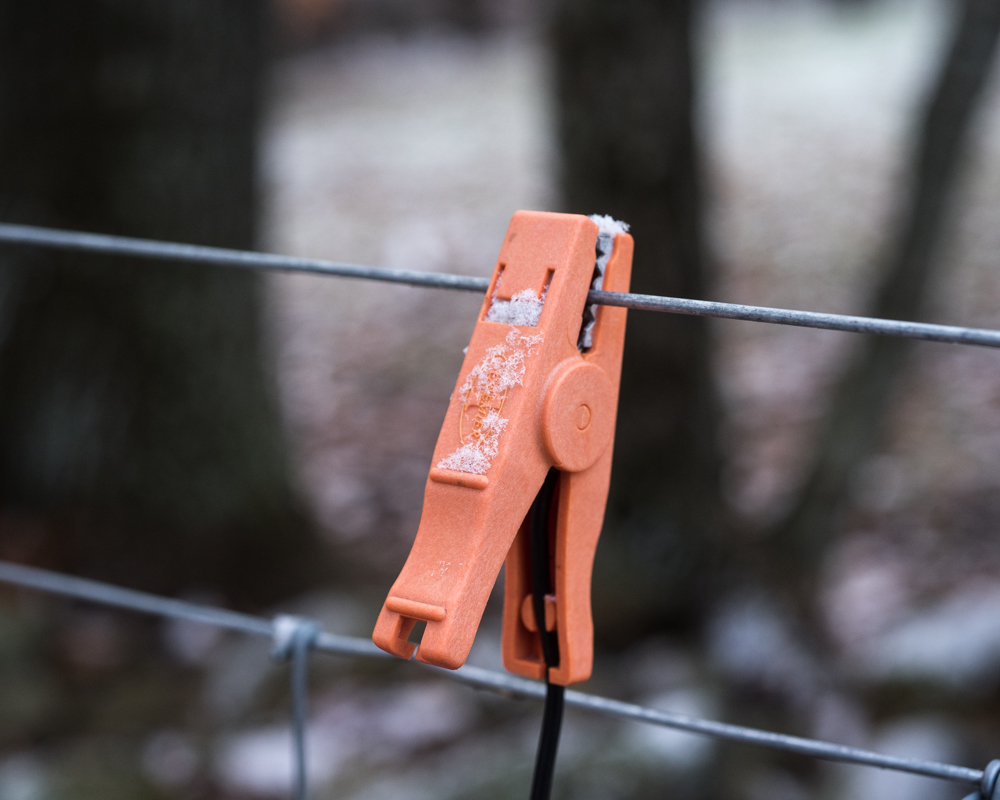
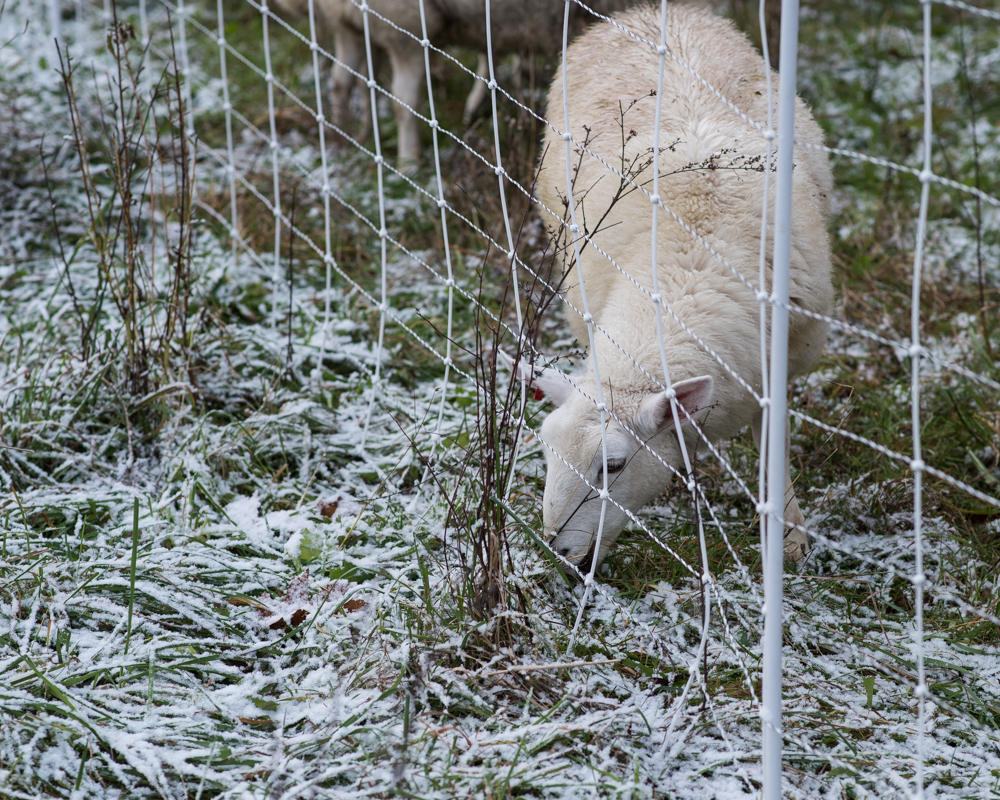
A friend who worked as a surveyor in Alaska says the locals refer to this as termination dust, a light snowfall in the high elevations, signaling the end of anything like summer weather.
Tagged: dusting, first snow, hot link, lamb, pasture, Premier 1, sheep, snow, termination dust, VW GTI
When I moved the group of 20 lambs back to the farm to finishing weaning them, I put them into the big hard-fenced field (Bill’s Winter Fortress). This was partly a matter of convenience, as I had my hands full with the big group on Holt Road, and partly because it was nice to have the lambs at hand for herding training with Cass and Chloe. The downside of this convenience is that I’d had the dorset group and then the rams grazing in the Fortress shortly before, and I was concerned about transmission of intestinal parasites. Haemonchus contortus, the most common sheep parasite hereabouts, sheds eggs in the poop of its host; the eggs hatch and develop into infective larvae in about 3 weeks, and the larvae can be viable for up to 3 weeks without finding a new host. So the best way to control H. contortus parasitism in your flock is to make sure that at least 6 weeks elapse between repeated grazings. I knew I was violating this rule, but I rationalized (always rationalizing…) that the Fortress was big and I’d only been running a few sheep in there, so perhaps the likely parasite eggs weren’t densely enough distributed for the lambs to encounter them.
Reality is hard on wishful thinking.
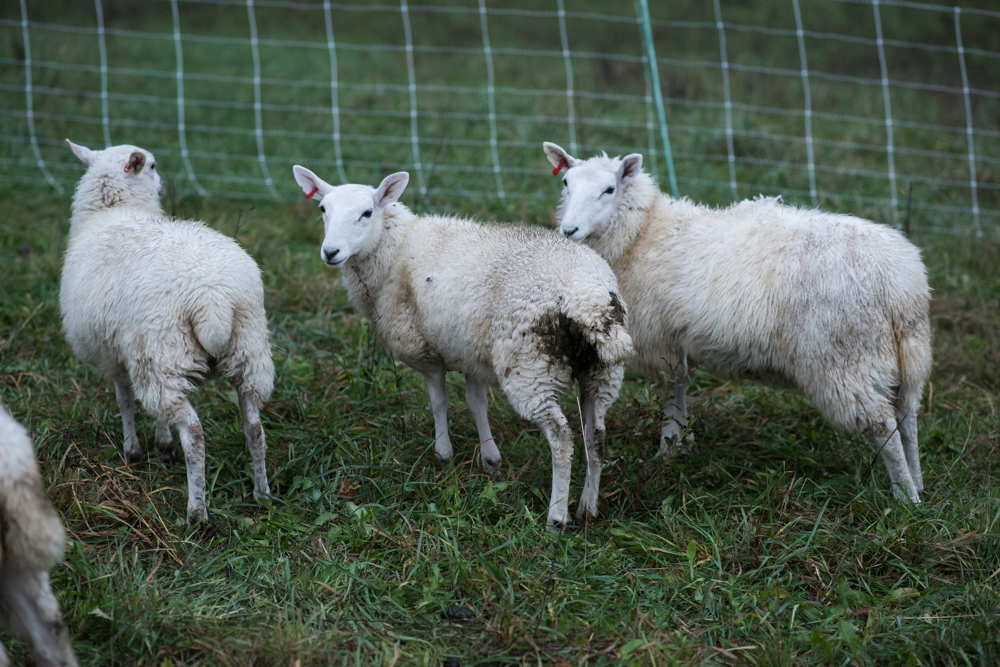
I noticed this morning that two of the 20 lambs had egregiously poopy butts, a typical symptom of an infection with H. contortus. I’m not sure what to conclude from the fact that 18 of the lambs seem unaffected — not sure if the parasites haven’t reached sufficient numbers in the other lambs to cause visible symptoms, whether the other lambs didn’t get infected (either by luck or by dint of inherent resistance), or if the other lambs are infected but are able to keep the parasite numbers low enough to avoid symptoms (a characteristic called resilience).
In that perfect world that I was longing for yesterday, I would carefully collect fecal samples from all 20 lambs (keeping track of each sample, of course), and have them tested for the presence of parasite eggs. (In a really perfect world, I would have a little laboratory in my office to do the test myself.) With information about the level of infection in each lamb, I could draw conclusions about who was resistant, who was resilient despite being infected, and who was at the mercy of the worms. These data would help me make breeding decisions, since I want to be selecting for sheep that are naturally resistant or resilient to infection by intestinal parasites. In the real world, I will treat the whole group with an antihelmintic drug that will (hopefully) kills the worms, but also obliterate the selection criteria. I will make note of the lambs showing obvious symptoms of parasitism, and if they are consistently the ones with poopy butts, they will probably earn themselves a trip to freezer camp.
In a more perfect world, if I were a more perfect shepherd, I’d move the sheep to new grass the instant they had sufficiently grazed their previous paddock. In the real world, I’m grateful to have a stockpile of hay.
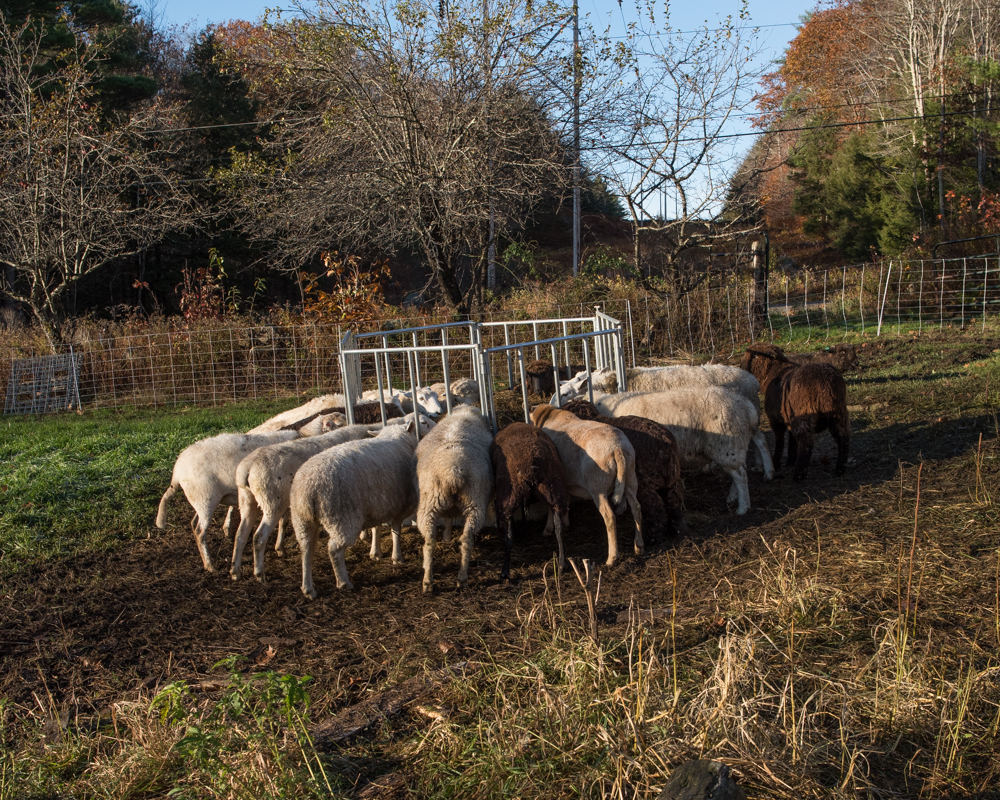
The sheep had eaten through the lower pasture on a Friday night when I got home late from Boston. I figured I needed at least 2 hours to set up their new grazing area and move them across the farm, and I had about 45 minutes of daylight left. Cass can do many things, but precisely moving sheep that she can’t see exceeds her current abilities; thankfully the tractor has headlights, and I was able to bring over one of last year’s round bales and get the bale feeder set up well after dark. The hay bought me 24 hours of grace, and I got everyone moved to real grass this evening.
I was also excited to try out a new style of bale feeder, one that will hopefully be a little more sheep-friendly than the one I was using last year. The Premier feeder I was using last year was configured so that some of the sheep rubbed their necks raw reaching in for baleage.
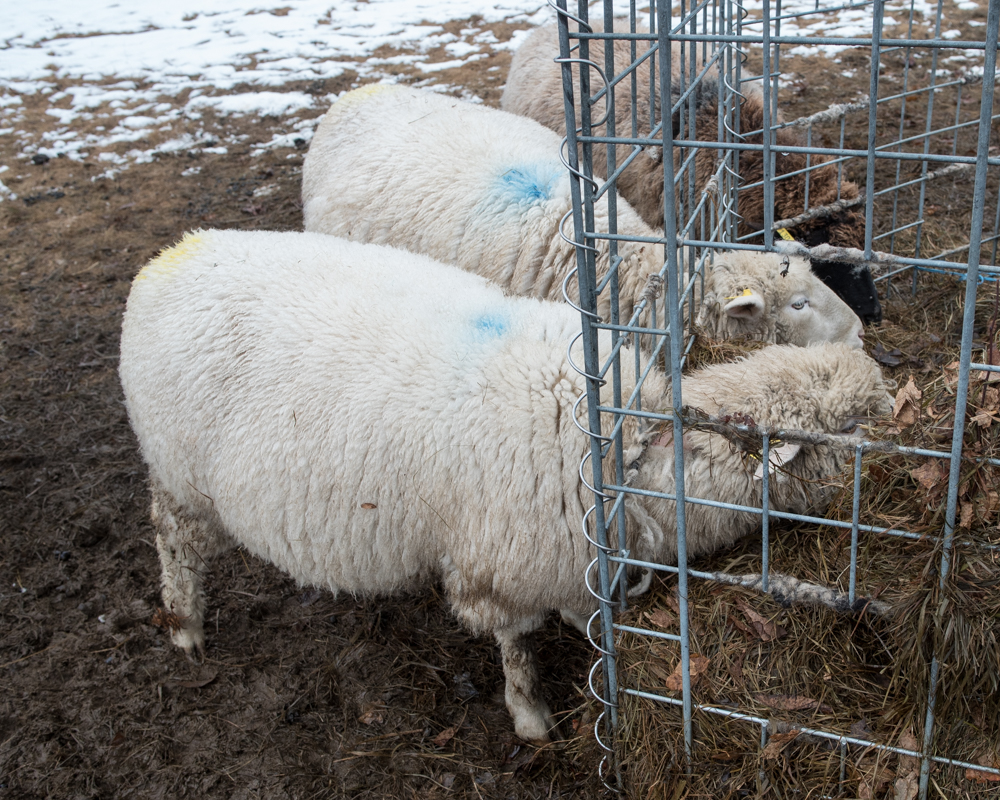 The new feeder seems like it couldn’t cause this, though I suspect it will have its own dammit features.
The new feeder seems like it couldn’t cause this, though I suspect it will have its own dammit features.
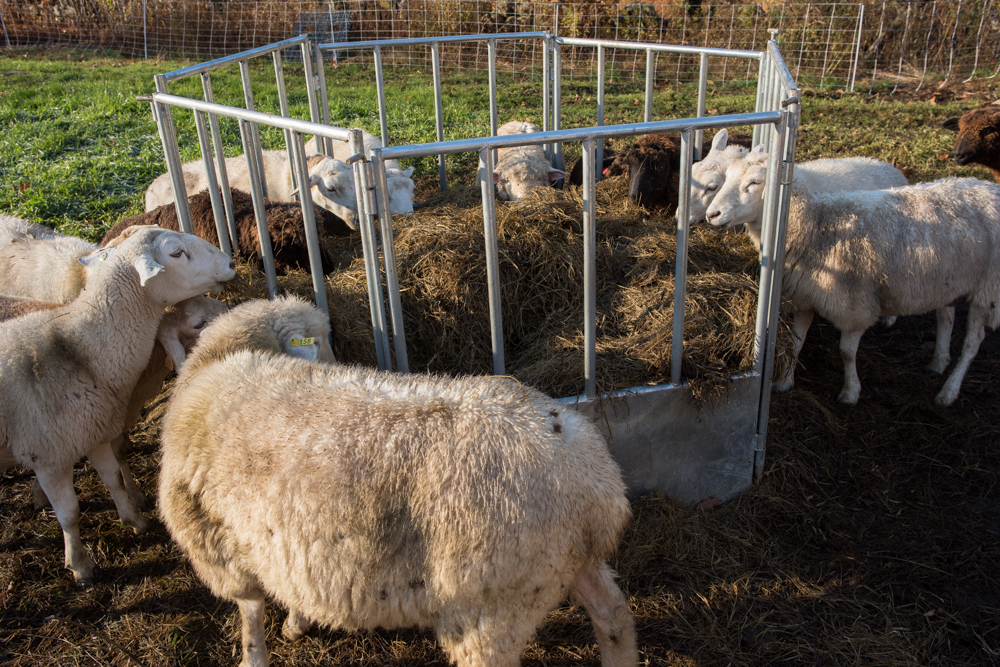
So far, no problems. I’m hoping that the feeders won’t get deployed in earnest — at the end of the grazing season, either when I run out of grass or it’s too buried in snow — for a month or more.
I’m surprised at how happy I am to have the entire flock back at my place. Part of it is certainly a logistical relief, that I can walk outside and quickly get a sense of whether anything has gone seriously wrong, but there’s a less tangible part as well, a sense of completeness when the animals are nearby. Maybe I am becoming a shepherd.
We got about 48 hours respite from the rain, but now it’s back in earnest.
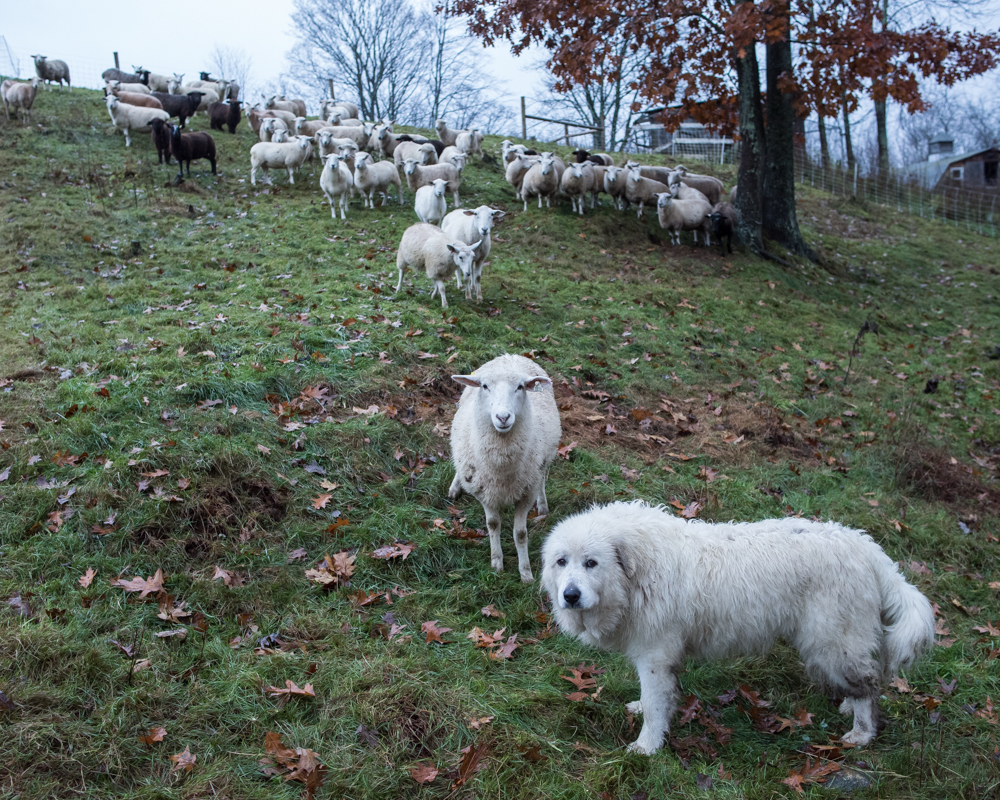
I tried to convince Cleo and the ewes that it wasn’t my fault, but I’m not sure they believed me. I set them up for the night on a hillside in the lee of the wind, so they’ll have a bit of protection; I’ll try to resist the urge to apologize in the morning.
I feel like I’m constantly wrestling to disentangle the emotions I project onto the animals around me from their firsthand experiences of the world.
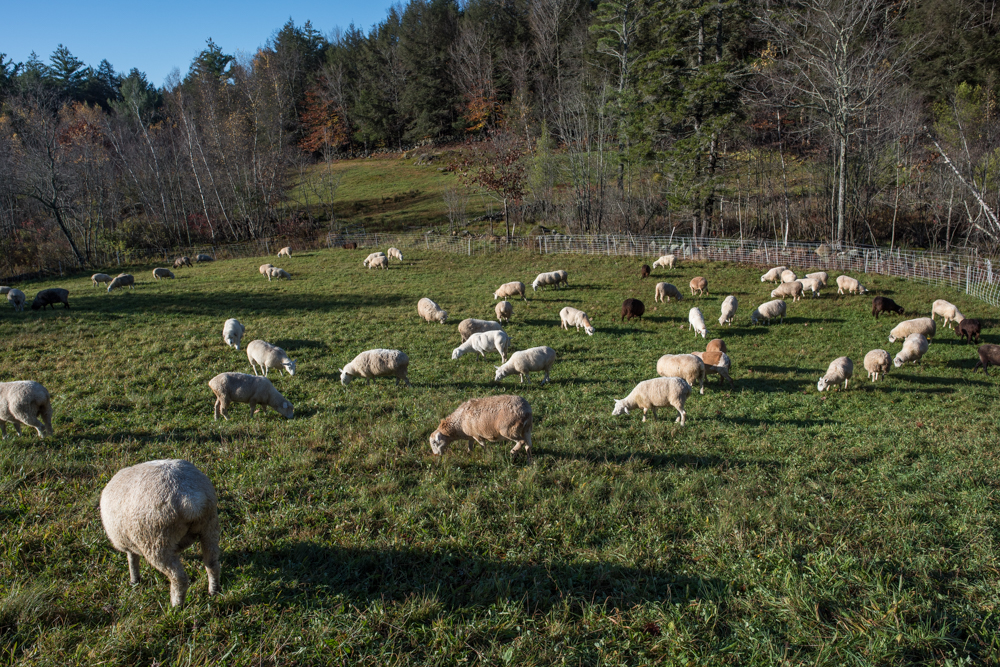
So I struggle not to read contentedness in this scene, or even happy relief at the end of the rain. Do the ewes have an extra spring in their step at the break of 3 days of miserable weather, or do they experience each moment in isolation? Sheep are clearly able to learn, so they must have some manner of comparing a previous experience to a new situation, but I doubt I’ll ever know whether they perceive the fifth beautiful day in a row any differently than the first.
Tagged: cognition, consciousness, Daniel Dennett, learning, pasture, perception, projection, sheep, sunny morning
As I expected, there were freshly-dead caterpillars this morning — the entomopathogenic fungus seems to dispatch them pretty quickly.
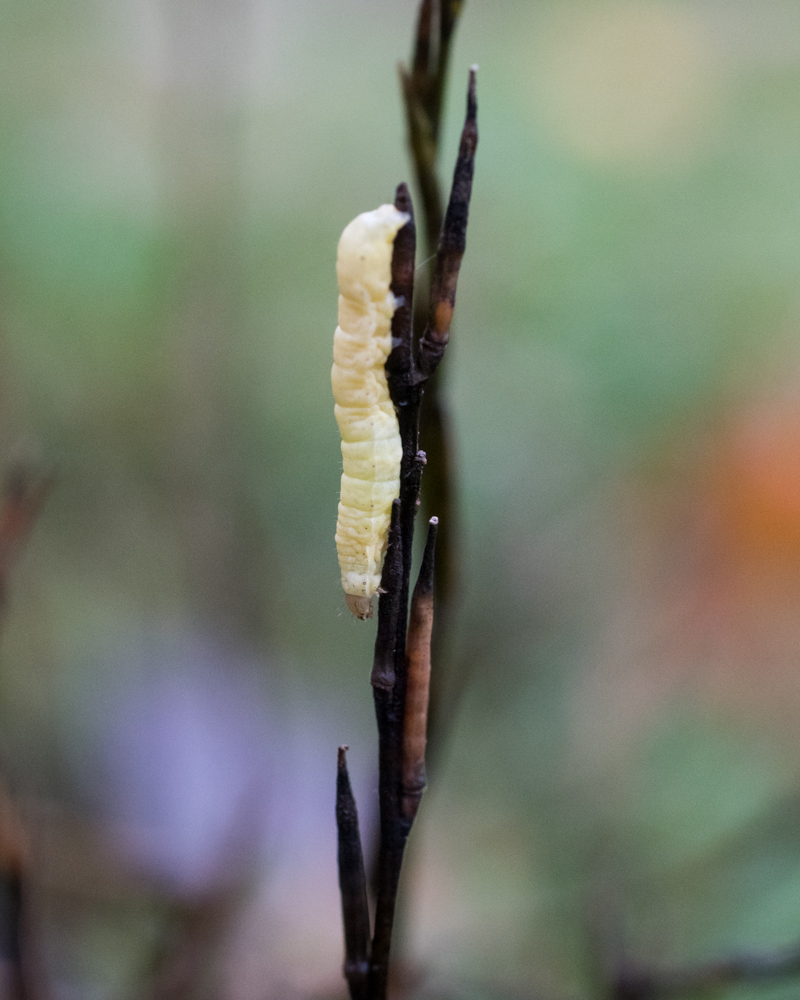
Carl Majewski, from the University of New Hampshire Cooperative Extension Service, along with his colleague, entomologist Alan Eaton, confirmed that what I’m seeing are fall armyworms (Spodoptera frugiperda), caterpillars known for developing large, hungry populations when the conditions are right. We’ve had a recent stretch of very humid weather in the 60s and 70s, perfect conditions for these guys to thrive and potentially damage large areas of pasture. Carl half-seriously suggested we culture the fungus that’s been killing my armyworms in an attempt to develop a biological control for future outbreaks of the caterpillar.
Since last night, the temperature has dropped 25 degrees and we’ve gotten nearly 2 inches of rain (curious readers can see farm weather conditions here), so I’m assuming that both armyworms and their fungal adversary will be much less active tomorrow. The sheep haven’t been thrilled with the weather conditions either,
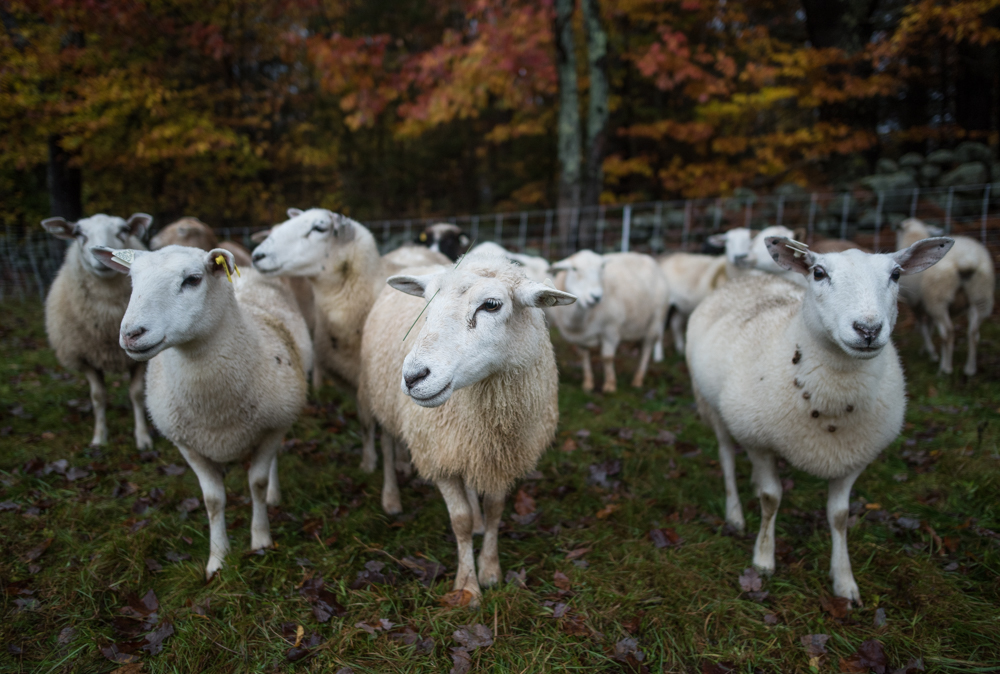
but between their fleeces and the magic of endothermy, they’ll be fine. The pasture they’re grazing on Holt Road has much less grass than I remembered from a visit 5 weeks ago, and I’m wondering if armyworms have made their way through those fields as well. I’ve found some of the same melting caterpillars that I saw at my place. Regardless of the cause, the sheep are almost out of grass, so I’ll be moving them back to my place on Saturday.
Tagged: cold, endotherm, entomopathogenic, fall armyworm, fungus, grass, pasture, rain, sheep, Spodoptera frugiperda, wet, Wilder Brook Farm
If this year has been a test of my commitment and resourcefulness, this morning provided a pop quiz. As I was setting up electronet for the next grazing rotation, I noticed something yellow in the field, something that turned out to be a big pile of cracked corn. I grabbed a bucket and scoop before I moved the sheep, since a big meal of grain can be fatal to sheep that aren’t accustomed to it.
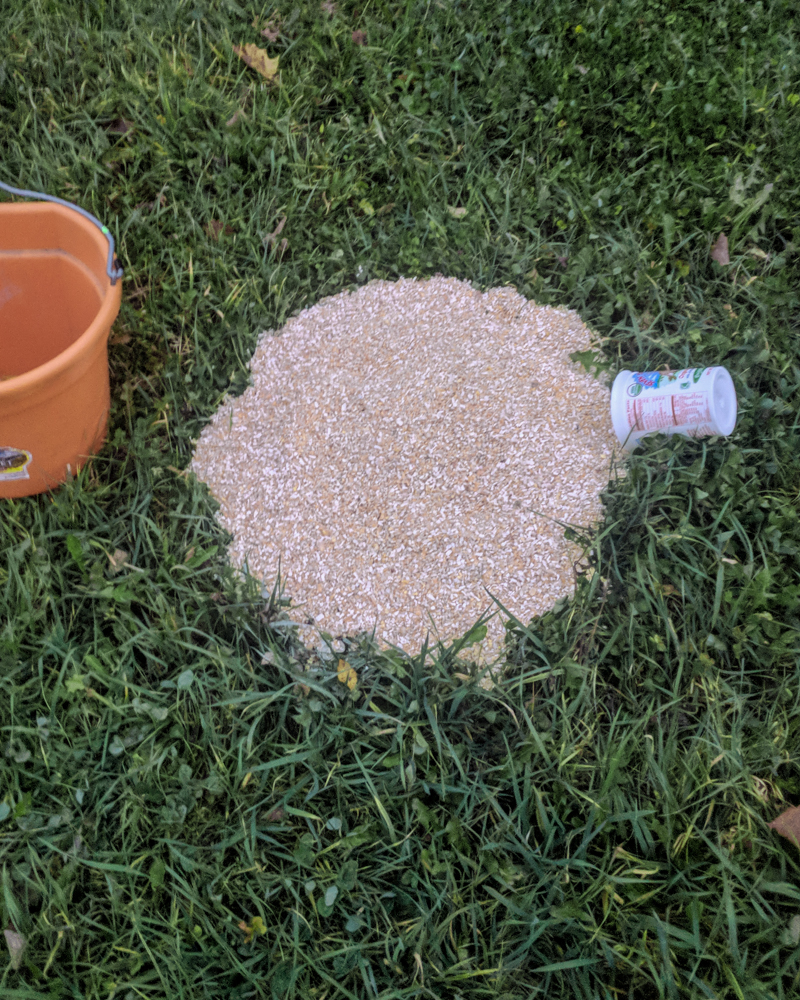
The pile mostly filled a 5-gallon bucket and weighed between 25 and 30 pounds.
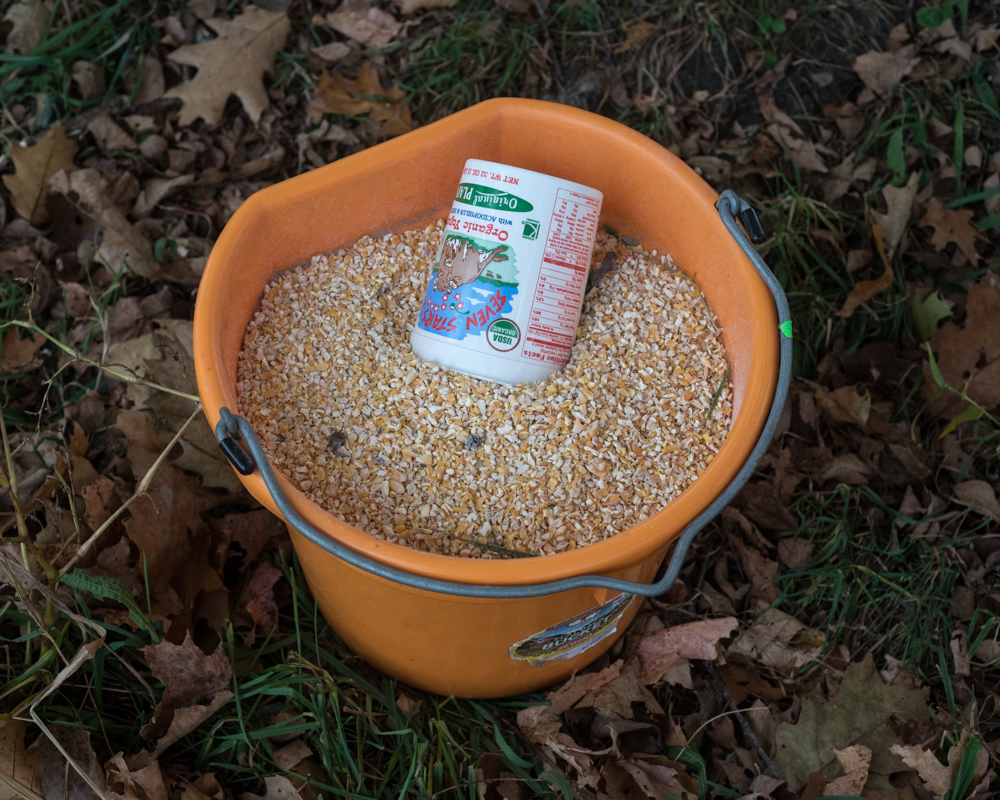
For reference, a safe amount of corn to feed a sheep who is unaccustomed to grain is about ¼ lb per day. And as I expected, the ewes quickly attacked the remaining corn when I moved them to the new pasture section.
